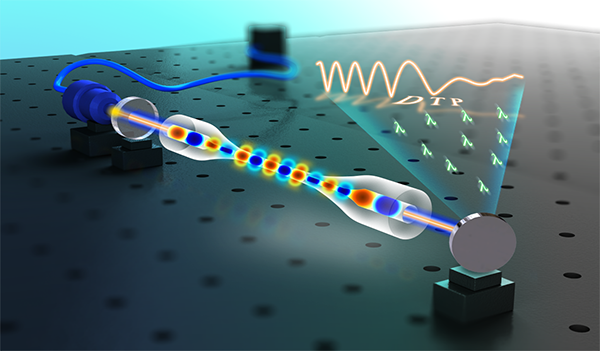Micro fibers are known as optical waveguides with diameters close to the wavelength of transmitted light. Owing to its large fractional evanescent fields, a micro fiber can guide light with enhanced light-material interaction, which makes it a versatile platform for optical sensing on micro/nanometer scale with special advantages including small footprint, fast response, and high spectral sensitivity. Refractive index (RI) sensing with micro fibers has been engaged in a wide range of applications especially in biochemical analysis, environmental monitoring, and industry process monitoring. In fact, the sensitivity to the surrounding refractive index in such fields often falls in the range of 10-4-10-5 refractive index unit (RIU) for instruments, which is a challenge to the conventional micro fibers.
To overcome these limits, the research group including Dr. Bing Sun from Nanjing University of Posts and Telecommunications (NUPT) demonstrated a tapered two-mode fiber (TTMF) to be operated at the dispersion turning point (DTP). Near the DTP, ultra-high sensitivities sensing was numerically obtained and then verified experiment was carried out. This work has been published in Chinese Optics Letters, Volume 17, No. 11, 2019 (Fang Fang, et al., Improvement on refractive index sensing by exploiting the tapered two-mode fibers).
The dominating proportion of evanescent field of HE11 and HE12 modes and the involving periodic interference contribute to ultra-high sensitivities. Furthermore, the RI sensitivity of the resonance (i.e., S) can be calculated through the following equation: S=dλ/dnSRI=(1/G)×(∂Δneff/∂nSRI),G=Δneff-λ×∂Δneff/∂λ. The determinative parameters of S are the wavelength λ, the RI-induced variation of index difference ∂Δneff/∂nSRI, and the diameters of waist. And when G approaches zero, the RI sensitivity is dramatically become to ±∞. So, our simple motivation that the appearance of the DTP allowed for the wider waist diameter (∼4.0 μm) in two-mode fibers than that of other kinds of optical fibers was easily understood. Further tracking the resonant wavelength shift around the DTP, it is found that the sensor exhibits a sensitivity of 1.81×104 nm/RIU and a limit of detection down up to 3.29×10-5 RIU in a liquid glycerol solution.
Further work will be focused on the application in the detection of cancers biomarker in early-stage to help people understand biological processes.

Schematic diagram of the tapered two-mode fiber (TTMF). The interference spectrum of the TTMF has been involved with continuous mode evolution from the HE11 and HE12 modes.


